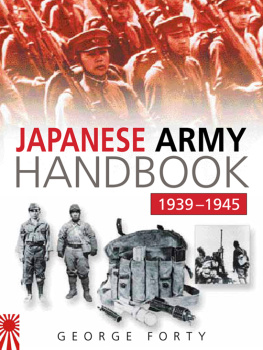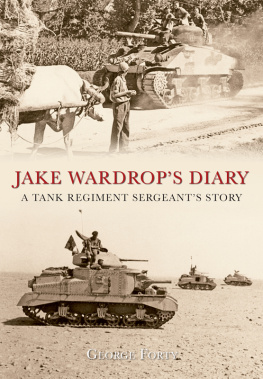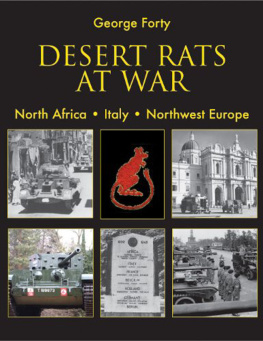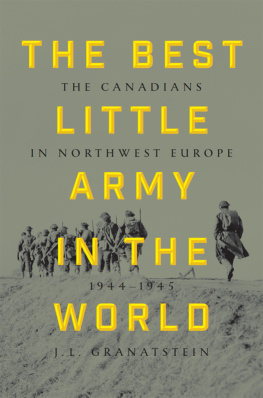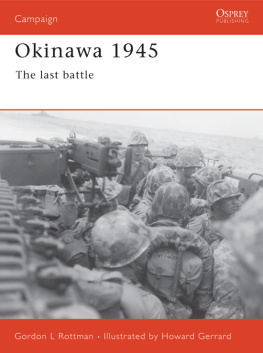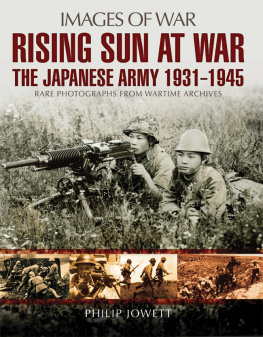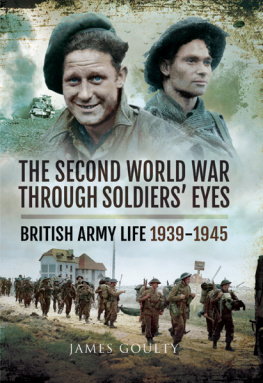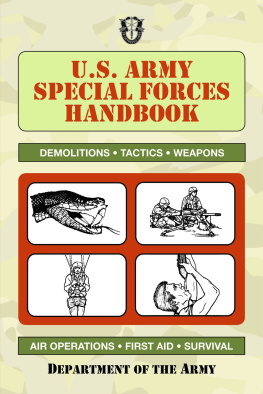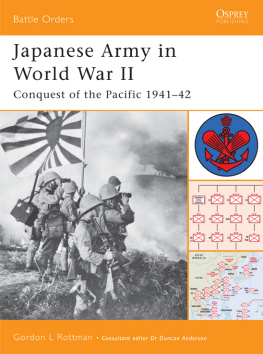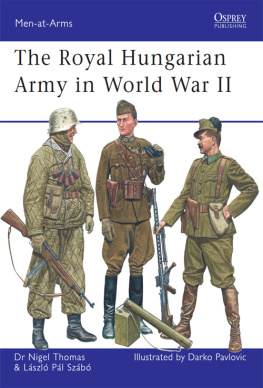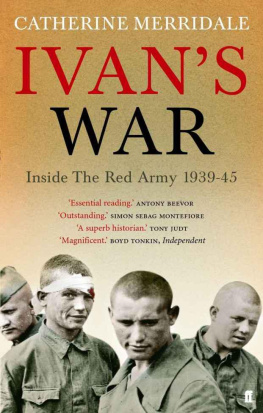George Forty - The Japanese Army Handbook 1939-1945
Here you can read online George Forty - The Japanese Army Handbook 1939-1945 full text of the book (entire story) in english for free. Download pdf and epub, get meaning, cover and reviews about this ebook. year: 2014, publisher: Sutton Publishing, genre: Politics. Description of the work, (preface) as well as reviews are available. Best literature library LitArk.com created for fans of good reading and offers a wide selection of genres:
Romance novel
Science fiction
Adventure
Detective
Science
History
Home and family
Prose
Art
Politics
Computer
Non-fiction
Religion
Business
Children
Humor
Choose a favorite category and find really read worthwhile books. Enjoy immersion in the world of imagination, feel the emotions of the characters or learn something new for yourself, make an fascinating discovery.
- Book:The Japanese Army Handbook 1939-1945
- Author:
- Publisher:Sutton Publishing
- Genre:
- Year:2014
- Rating:3 / 5
- Favourites:Add to favourites
- Your mark:
- 60
- 1
- 2
- 3
- 4
- 5
The Japanese Army Handbook 1939-1945: summary, description and annotation
We offer to read an annotation, description, summary or preface (depends on what the author of the book "The Japanese Army Handbook 1939-1945" wrote himself). If you haven't found the necessary information about the book — write in the comments, we will try to find it.
The Japanese Army Handbook 1939-1945 — read online for free the complete book (whole text) full work
Below is the text of the book, divided by pages. System saving the place of the last page read, allows you to conveniently read the book "The Japanese Army Handbook 1939-1945" online for free, without having to search again every time where you left off. Put a bookmark, and you can go to the page where you finished reading at any time.
Font size:
Interval:
Bookmark:

First published in 1999
The History Press
The Mill, Brimscombe Port
Stroud, Gloucestershire, GL5 2QG
www.thehistorypress.co.uk
This ebook edition first published in 2013
All rights reserved
George Forty, 1999, 2013
The right of George Forty to be identified as the Author of this work has been asserted in accordance with the Copyright, Designs and Patents Act 1988.
This ebook is copyright material and must not be copied, reproduced, transferred, distributed, leased, licensed or publicly performed or used in any way except as specifically permitted in writing by the publishers, as allowed under the terms and conditions under which it was purchased or as strictly permitted by applicable copyright law. Any unauthorised distribution or use of this text may be a direct infringement of the authors and publishers rights, and those responsible may be liable in law accordingly.
EPUB ISBN 978-0-7509-5413-6
Original typesetting by The History Press
First and foremost I must thank the National Archives of America for allowing me to quote from their wartime training manuals, which has permitted me to put in considerably more detail than would otherwise have been possible. I must also thank the Photographic Department at the IWM and the Tank Museum for their invaluable assistance in allowing me to search their archives for suitable photographs. Individually I must thank Mr Richard Fuller for all his help and kindness, especially with the photographs of Japanese personalities; also Bill Norman of RHQ The Duke of Wellingtons Regiment for providing the excellent photograph of a young Japanese tank commander. Finally, I must thank Dr Kazuo Tamayama for allowing me to quote from his book Japanese Soldiers of the Burma Campaign, Mr Lamont-Brown and those other authors from whose works I have quoted, and last but not least my son Jonathan, for his invaluable help with all the drawings and diagrams.
In revising the handbook I was lucky enough to get into contact with Mr Alfred Weinzierl of Osaka, who has kindly advised me of some important caption alterations that are now incorporated into this new edition, so I am very grateful for his generous assistance.
George Forty
Bryantspuddle
August 1998
Lack of information is a most fertile source of exaggeration, distortion and legend which, if unrefuted, eventually assumes the stature of accepted fact. Thus begins the opening chapter of a handy little pocket-sized US Army manual, Soldiers Guide to the Japanese Army. It goes on: For years the Japanese were taken lightly as military antagonists, and the confidence of the Western World in its disdainful appraisal of their military and naval capabilities seemed justified by the Japanese failure to achieve decisive victory in the Chinese war. Then, following the outbreak of war with the United States and Britain, a succession of speedy and apparently easy victories stimulated the rise of the legend of invincibility of the Japanese soldier. He allegedly was unconquerable in jungle terrain; his fanatical, death-courting charges and last-ditch defenses were broadcast until popular repute invested the Japanese soldier with almost superhuman attributes. Several years of combat experience against the Japanese have replaced such fanciful notions by more realistic evaluation. While the military capabilities of the Japanese soldier still are appreciated, it is now realized that he has pronounced weaknesses. As a soldier his good qualities are not innate but are the result of careful training and preparation for specific tactical situations. Hence an accurate appraisal of the Japanese soldier must give adequate attention to the Japanese system of military training and show its effect on his physical, mental and temperamental characteristics.
To be fair both to the Japanese soldier and to the person who wrote that appraisal one must remember that the handbook was deliberately written as a morale booster to the GIs who undoubtedly held the Imperial Japanese Army (IJA) in some awe. However, this and other comments in the handbook certainly do not always do justice to the undoubted fighting prowess of the average Japanese soldier, of whom Gen Slim, the famous commander of the British XIVth Army, wrote in his book Defeat into Victory: He fought and marched till he died. If 500 Japanese were ordered to hold a position, we had to kill four hundred and ninety five before it was ours and the last five killed themselves. It was this combination of obedience and ferocity that made the Japanese Army, whatever its condition, so formidable. It would make a European army invincible.
In order to keep this handbook within manageable proportions I have omitted all but brief reference to Japanese air and sea (naval land) forces. However, a brief explanation is necessary here:
Japanese Air Service. During the Second World War, Japan did not have an independent air force, the Japanese Army Air Service being an integral part of the IJA. In the same way, the Japanese Naval Air Service was an integral part of the Navy. There was a separate Inspector General of Aviation, who was on the same level as the Inspector General of Military Training.
Naval Land Forces. The Japanese used special naval landing forces in China from 1932 onwards, then during the Second World War they employed naval land forces to occupy Pacific island bases such as Wake Island. Special naval landing forces (instead of the Army) were also used in the defence of a number of outlying bases. These forces were organized and equipped with weapons similar to those of the Army, but their uniform was navy blues and canvas leggings, with Special Naval Landing Force (in Japanese characters) on their naval caps. The Imperial Japanese Navy (IJN) took a continuing interest in the design and production of certain armoured fighting vehicles (AFVs), in particular amphibians. They also used armoured cars and the method by which they can be distinguished from IJA AFVs is explained in the chapter on vehicles.
Throughout this book when referring to vehicle types, uniforms and so on, I have used the Japanese system of numbering. This was based on the calendar that began in the year the first Japanese Empire was founded, or in western terms 660 BC. In other words, Japanese years were equivalent to western years plus 660; for example, the Japanese equivalent of the year 1938 was the year 2598, and the war years 1939 to 1945 were 2599 to 2605. Japanese vehicle types, uniforms and so on were numbered using the last two digits of the year of introduction; hence the Type 98 light tank was built in the year 2598 (or 1938). This is complicated enough, but from the year 2601 (1941) the Japanese introduced a new system for numbering tanks, so that instead of a tank built in 2601 being designated Type 01, the nought was dropped and the tank referred to as the Type 1.
As with my other handbooks this is not meant to be an exhaustive treatise on the IJA, but rather a handy reference book for modellers, war-gamers and others. The information comes mainly from a series of wartime US Army manuals and I must thank the US National Archives for allowing me to quote extensively from these references. It is not always easy to cross-reference and verify every single fact and there are an immense number of facts in this book. As I found out to my cost in the first edition of the
Font size:
Interval:
Bookmark:
Similar books «The Japanese Army Handbook 1939-1945»
Look at similar books to The Japanese Army Handbook 1939-1945. We have selected literature similar in name and meaning in the hope of providing readers with more options to find new, interesting, not yet read works.
Discussion, reviews of the book The Japanese Army Handbook 1939-1945 and just readers' own opinions. Leave your comments, write what you think about the work, its meaning or the main characters. Specify what exactly you liked and what you didn't like, and why you think so.

